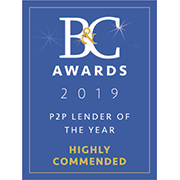
How to be a Smarter Investor: Interview with Financial Thing
A familiar face for many savvy peer-to-peer investors, Financial Thing founder Laurence Samuels describes himself as having ‘a passion for helping others to figure out what took me years to learn’. So, when Laurence visited the Kuflink offices earlier this year, the team knew it was the perfect opportunity to share some of his insight and experience with our investors.
From the FCA review to the international market, Laurence spoke to us about key issues within the peer to peer space:
What are the top 3 things you look out for when researching a potential new platform?
LS: Do the returns offered equal the risk levels? Do the loans and lending products make sense? How is the company funded and how will it operate through the start-up period of losses? How and when will the company become profitable?
I look at the company’s Directors’ experience and the teams experience in regards to the products being offered. Do they have loan underwriting and default recovery experience?
In light of the recent FCA review, what are the key points for change you’d like to see within the P2P industry?
LS: I agree with many of the points inside the FCA review, particularly about risk levels being difficult to quantify and how provision funds provide investors with a false sense of security. One bad loan on a platform could wipe out an entire provision fund and then what?
I’d also like to see far more transparency. Easily downloadable total loan books showing what the spread between lender and borrower interest rates so the risks can be evaluated. Also, an emphasis on more detailed risk explanations. People need to understand that returns don’t always accurately portray the possible risks and that defaults will happen and are an unfortunate part of P2P and not to panic when they occur.
People must understand that default recovery can be a long process, especially when property is involved, and that capital losses are possible. I believe P2P platforms should be required to show loan spreads between lender and borrower so lenders can assess risk.
What do you think are the key difference between P2P investing in the UK and the US? Is there anything the UK industry could learn from the US?
LS: In the USA, the big P2P players in the market (Lending Club and Prosper) have had the benefit of being publicly traded so there tends to be a little more public awareness. Having said that, from my interactions with the general American public, P2P is still an unknown investment vehicle. Some of the high entry investment costs have created a difficult entry barrier for your average investor.
The UK is much more investor friendly with lower cost entry barriers. The main thing for the UK industry to learn is improved transparency. Some companies don’t have easily accessible loan books or statistics. The USA is regulated by the SEC which is quite stringent.
Why do you choose to invest in P2P, as opposed to more traditional options such as stocks and shares or property investing?
P2P makes up about 15% of my investment portfolio along with index trackers and property. I use P2P for diversification purposes to reduce risk. I believe P2P has a place in most investors portfolio’s but no one should ever place too much money into anyone sector.
What is the biggest or most important thing you’ve learned from your P2P investments so far?
Don’t chase the highest returns because even the best loans on paper can go bad so diversify, diversify, diversify. I’ve learned how important it is to spread investments across many loans and peer to peer companies.
Want to find out more about what happened when Financial Thing visited Kuflink HQ? Watch Laurence’s video of his time in Kent here!













